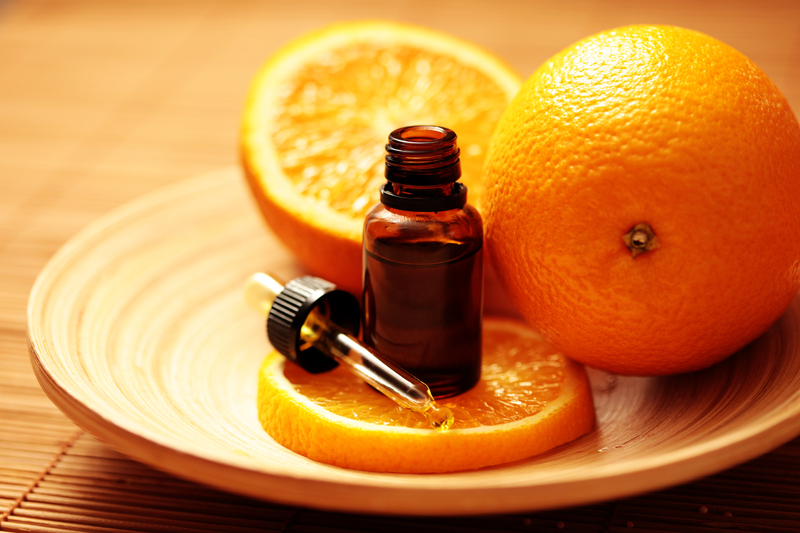Top Tips for a Residue-Free Stovetop After Burnt Spills
Cooking is enjoyable and rewarding, but even the most careful home chefs experience burnt spills on their stovetop at some point. These stubborn, burnt-on stains and residues can make your stovetop look dirty and uninviting. Worse, if not addressed promptly and effectively, residue buildup can affect the performance and lifespan of your appliance. The good news? With the right methods, tools, and products, you can achieve a residue-free, gleaming stovetop after burnt spills. In this comprehensive article, you'll discover everything you need to know to keep your stovetop spotless, efficient, and beautiful.

Why a Residue-Free Stovetop Matters
- Hygiene: Food residue harbors bacteria, making your cooking surface unsafe.
- Performance: Burnt-on residue can affect heat transfer and even cause unpleasant odors.
- Aesthetics: A clean stovetop enhances your kitchen's visual appeal.
- Longevity: Accumulated spills can degrade the material, causing rust or permanent stains.
Understanding the Challenges of Burnt Spills
Burnt spills on the stovetop are more than just unsightly. Whether it's a boil-over of starchy pasta water or splattered sauces that burned onto the hot surface, these spills can leave stubborn, thick residue behind. Traditional cleaning methods often aren't enough -- scrubbing can damage finishes, and harsh chemicals can be unsafe near food preparation areas. That's why it's essential to know the right techniques for maintaining a residue-free stovetop, especially after burnt spills.
Types of Stovetops & Common Burnt Residue Issues
- Gas stovetops: Grates and burners collect burnt food, requiring detailed cleaning.
- Electric coil stovetops: Drip pans beneath the coils can accumulate grime.
- Glass/ceramic stovetops: Sensitive surfaces prone to stubborn, visible stains.
Immediate Action Is Key: What to Do Right After a Burnt Spill
One of the best ways to maintain a residue-free stovetop after burnt spills is to act fast. Here's how you can quickly minimize the damage:
- Turn off the heat: Let the stovetop cool just slightly to avoid burns, but don't wait too long as residue hardens over time.
- Wipe up loose debris: Using a damp cloth or paper towel, gently remove any loose food particles before they solidify.
- Apply a damp towel: Placing a wet towel over the burnt area for a few minutes softens stuck-on residue for easier cleaning.
These quick initial steps can make the deeper cleaning process much easier and more effective.
Essential Tools for a Residue-Free Stovetop
Before diving into the deep clean, make sure you have the right supplies. Handy tools can help restore your stovetop to a spotless, residue-free condition:
- Non-abrasive sponges: Essential for gentle yet effective scrubbing.
- Microfiber cloths: Perfect for streak-free, lint-free cleaning.
- Plastic scraper: Helps lift stubborn burnt residue without scratching the surface.
- Baking soda and white vinegar: Powerful, food-safe cleaning agents.
- Specialized stovetop cleaner: Available for both gas and glass/ceramic surfaces.
- Toothbrush or small brush: Gets into tight crevices around burners and controls.
Step-by-Step Guide: Achieving a Residue-Free Stovetop Post-Spill
Achieving a residue-free stovetop after a burnt spill involves several strategic steps for deep cleaning. Consistency is key!
1. Remove Surface Grates and Burners (Gas & Coil Stovetops)
*Always ensure your appliance is fully cool and disconnected from electricity or gas, where applicable.*
- Lift off grates, burners, and drip pans to expose the main cooking surface.
- Soak removable components in hot, soapy water for at least 15-20 minutes. For difficult burnt residue, add a cup of vinegar to the soaking solution.
- Scrub each piece gently with a non-abrasive sponge or brush, and rinse well.
2. Apply a Stovetop-Safe Cleaning Paste
For stubborn burnt residues on the stovetop itself, a homemade paste works wonders. Mix baking soda with water until it forms a spreadable consistency.
- Spread the baking soda paste over burnt areas and let it sit for 10-15 minutes to break down the burned residue.
- For extra cleaning power, lightly spritz the paste with white vinegar after the initial soak. The fizzing reaction helps lift grime.
3. Scrape and Wipe Away Residue
- Use a plastic scraper (never metal) to gently lift softened burnt residue.
- Follow up with a damp microfiber cloth to wipe away all traces of baking soda and grime.
4. Clean the Surface Thoroughly
- Spray the entire stovetop with a dedicated stovetop or kitchen cleaner.
- Wipe with a clean, lint-free cloth for a streak-free result.
5. Tackle Tough Burnt Spills with Heat and Steam
For extra-stubborn burned-on food, steam can be a secret weapon:
- Fill a pot with water and boil it: Place it on a burner adjacent to the burnt area. The gentle steam helps loosen burnt residue for easier lifting.
- After a few minutes, turn off the burner, let it cool, and wipe the area with a damp cloth.
6. Address Crevices and Knobs
- Use a toothbrush or small cleaning brush to get around burner caps, controls, and trims.
- Wipe finished surfaces with a slightly damp cloth to capture remaining grime.
7. Dry and Polish for a Residue-Free Shine
- Dry the stovetop with a clean, dry microfiber cloth to prevent water spots or streaks.
- Buff gently for a glossy, residue-free finish that looks brand new.
Pro Tips for Glass and Ceramic Stovetops
Glass and ceramic stovetops require special care to keep them free from burnt-on residue and scratches:
- Always let the surface cool to avoid cracking or injury.
- Use a specialized cooktop scraper (often included with glass stoves) for stubborn residues -- never use metal tools or harsh abrasives.
- Clean in circular motions and avoid pressing too hard.
- Finish with a dedicated glass cooktop cleaner or a vinegar-water solution for a streak-free finish.
Natural Cleaning Solutions for Stovetop Spills
If you prefer to avoid commercial chemicals, try these eco-friendly, kitchen-safe methods for a residue-free stovetop after burnt spills:
Lemon Juice & Baking Soda
- Cut a lemon in half; sprinkle baking soda on the surface and use the cut lemon as a scrubber.
- The acidity of lemon helps break down burnt sugars and proteins, while baking soda lifts grease.
Vinegar Spray Solution
- Mix equal parts white vinegar and water in a spray bottle.
- Spray liberally on the stovetop, let sit for five minutes, then wipe with a soft cloth.
Tip: Always do a spot test before trying any new cleaning method on your appliance.
How to Prevent Burnt Spills and Residue in the Future
While knowing how to clean up burnt spills is essential, the best way to maintain a residue-free stovetop is by preventing spills in the first place. Here are some effective preventative habits:
- Use larger pots and pans: Prevent boil-overs that cause spills.
- Watch simmering foods: Don't leave the stovetop unattended when cooking at high heat.
- Wipe as you go: Quickly address small spills with a damp cloth while the surface is still warm (but not hot).
- Line drip pans (where applicable): Aluminum foil makes for easier cleanup on electric stoves.
- Clean regularly: A quick daily wipe-down keeps stubborn residue from building up.

Frequently Asked Questions (FAQs) about Residue-Free Stovetops After Burnt Spills
Can I use steel wool or abrasive pads to clean burnt residues?
No! Abrasive pads and steel wool can scratch and damage both enamel and glass cooktops, leaving them dull and susceptible to future staining. Stick with non-abrasive scrubbers.
What if the burnt spot won't budge?
For extremely stubborn stains that resist all other methods, try soaking the area with a mixture of baking soda paste and vinegar for several hours (or overnight). If residue still remains, repeat the process and avoid using sharp instruments.
Is it okay to use oven cleaner on my stovetop?
Most oven cleaners are too harsh for modern stovetops, especially glass, ceramic, or enameled surfaces. Always check manufacturer guidelines before applying any strong chemical cleaners.
How often should I deep clean my stovetop?
*For a truly residue-free stovetop, a deep clean is recommended at least once a week -- or immediately after any significant burnt spill.* Daily maintenance (quick wipe-downs) will reduce the need for time-consuming deep cleans.
Summary: Enjoy Cooking on a Residue-Free Stovetop
Burnt spills don't have to mean a permanently stained stovetop! With the right supplies, immediate action, and consistent care, you'll keep your cooking space spotless and residue-free after burnt spills. Whether you're cleaning a gas, electric, or glass-top stove, always use gentle, food-safe cleaning agents and avoid harsh abrasives. For eco-conscious cooks, simple DIY solutions like baking soda, vinegar, and lemon are both safe and effective.
Make stovetop cleaning a regular part of your kitchen routine to ensure a safe, beautiful, and efficient workspace for all your cooking adventures. Remember, a residue-free stovetop after burnt spills is just a few simple cleaning steps away -- and your kitchen will thank you!

